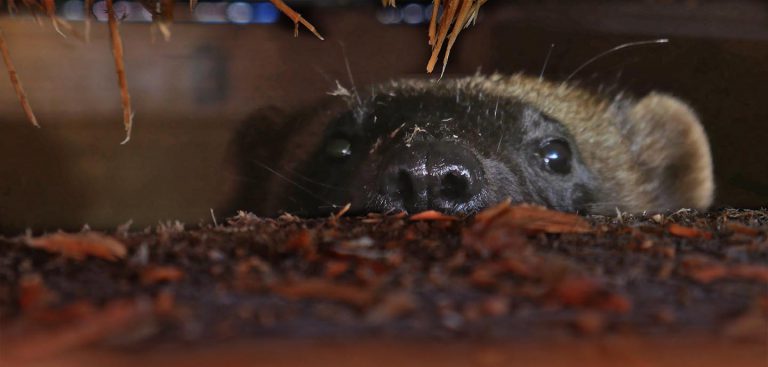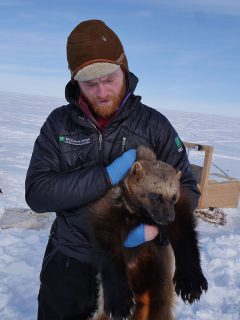
Wolverines and Western Arctic Conservation
Alaska / British Columbia

Tracking elusive wolverines is not a job for those who can’t handle sub-zero temperatures, dislike small planes or long hours on a snow machine, or lack patience. Fortunately, Dr. Martin Robards with the Wildlife Conservation Society (WCS) and his research team aren’t daunted by the many challenges the western Arctic can present to their field work—from capturing and collaring female wolverines, to collecting hair samples for genetic analysis and scat to assess diet, to aerial surveys to look for tracks and dens, to interviews with indigenous hunters to learn from the people who live with wolverines.
Wildlife Conservation Society’s research is yielding a better understanding of the distribution, range use, abundance, and health of wolverines in the National Petroleum Reserve-Alaska. Comprised of 23 million acres of Arctic landscapes, lakes, rivers, coastal lagoons, and barrier islands, the Reserve is the single biggest unit of public land in the United States. Wolves, grizzly and polar bears, caribou, walruses, and birds from every continent rely on the Reserve for habitat. Wolverines, however, are particularly useful to study: they are a sentinel species for Arctic wilderness and a wider suite of wildlife. They are wide-ranging, slow to reproduce, and vulnerable to climate change and expanding development such as mining and transportation corridors that increase disturbance and access to their habitats. Wolverines are also important to Alaska Native communities’ subsistence and culture. Their fur is valued for its warmth, frost resistance, and durability. “Qavvik”—as the Inupiat call wolverines—are also respected for their hardiness and ingenuity in the harsh North Slope environment.
Understanding where wolverines and other critical wildlife, like eiders, are living and reproducing can provide stronger justification for the protection of critical habitats, including the “Special Areas” designated in the Bureau of Land Management’s 2012 Resource Management Plan for the Reserve. That plan aims to balance energy exploration and development with the protection of fish, wildlife, and other values, but like any management plan, can be subject to the vagaries of politics; it doesn’t provide permanent protections to key areas.
This [wolverine mapping] is one of the most exciting projects we have—good science, great partners, and a real window into making a policy difference.”
Just as important as the research Wildlife Conservation Society undertakes to inform pan-Arctic wildlife protection strategies is how they do their work. Their research brings together local residents, researchers, planners, and public lands managers to solve conservation problems. For reflections on WCS’s partnerships in support of wolverines, eiders, and Arctic habitat conservation, here’s Dr. Martin Robards suggestion:



